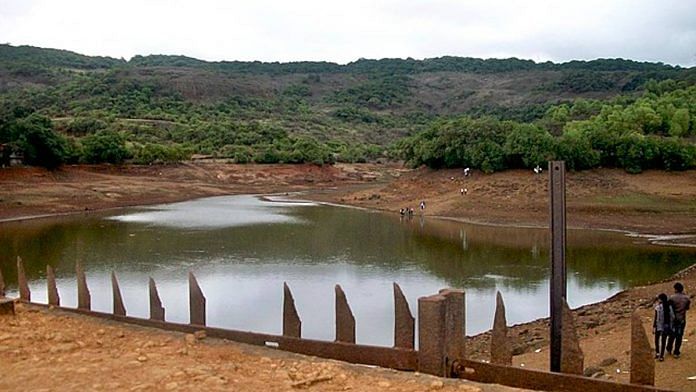New Delhi: India has 2.4 million water bodies, most of which are in West Bengal, followed by Uttar Pradesh, Andhra Pradesh, Odisha and Assam, the country’s first ever comprehensive census of water bodies has found. Over half of them are privately owned.
The census, conducted by the Union Jal Shakti ministry, also highlights the disparities between rural and urban areas. Of the total number of water bodies, 97 per cent (23,55,055) are in rural areas and only 2.9 per cent (69,485) in urban areas, stated the report, released Sunday.
A spokesperson for the ministry said the census provides a comprehensive inventory of India’s water resources, which includes natural (22 per cent) and man-made (78 per cent) water bodies such as ponds, tanks, reservoirs, check dams and lakes.
While 59.5 per cent of water bodies taken up for enumeration were ponds, tanks constitute 15.7 per cent, reservoirs 12.1 per cent, water conservation schemes/percolation tanks/check dams 9.3 per cent , lakes 0.9 per cent and others 2.5 per cent.
The census report also found that of the total water bodies, 55.2 per cent are owned by private entities and 44.8 per cent are under public ownership.
When it comes to privately-owned water bodies, most of them are either owned by individuals/farmers followed by a group of individuals and other private bodies. West Bengal topped the list in the private category, followed by Assam, Andhra Pradesh, Odisha and Jharkhand.
Out of all public-owned water bodies, the maximum are owned by panchayats, followed by the state irrigation/water resources department.
Explaining the methodology adopted for the census, a senior official of the Jal Shakti ministry said that first, all water bodies in the villages as well as towns were listed. The enumerators used the traditional methodology where paper based schedules were canvassed both for rural and urban areas. Three schedules, namely village schedule, urban schedule and water body schedule were canvassed in the census.
A smart phone was used to capture latitudes, longitudes and photographs of the water bodies. All states/UTs made efforts to complete the field work, data entry and validation work and the validated data was again examined at the central level before generation of the final table. The tabulated data was again shared with states for final confirmation about their reported data.
Also Read: India is bracing for its first digital Census in 2024. And a lot is set to change
Pisciculture, irrigation
The report also disclosed that of the total 24,24,540 water bodies in the country, 82.1 per cent (20,30,040) were ‘in use’, 1.6 per cent encroached upon and the remaining 16.3 per cent (3,94,500) ‘not in use’. Those not in use were mostly because they were dried up or destroyed beyond repair or affected by industrial effluents, construction activities, siltation or salinity.
Among ‘in use’ water bodies, 58.2 per cent (11,81,077) are ponds, 15.6 per cent (3,15,974) tanks, 14.2 per cent (2,89,163) reservoirs, 9.3 per cent (1,88,915) water conservation schemes/check dams/ percolation tanks, 0.5 per cent (9,558) lakes and 2.2 per cent (45,353) other water bodies.
The census data also found that out of all ‘in use’ water bodies, majority are reported to be used in pisciculture (breeding, rearing and transplantation of fish by artificial means). Here too, West Bengal tops the list of states, followed by Assam, Odisha, Uttar Pradesh and Andhra Pradesh.
Besides pisciculture, a majority of the water bodies are used for irrigation too. The top five states that use it for irrigation are Jharkhand, Andhra Pradesh, Telangana, West Bengal and Gujarat.
Nearly 40,000 water bodies encroached
Of the 38,496 water bodies reported to be encroached, a majority are ponds followed by tanks. An assessment of 24,516 encroached water bodies revealed that in 15,396 of them (62.1 per cent), less than 25 per cent of the area has been encroached.
According to the report, Water User Associations (WUA) have helped to a large extent in preventing encroachments. Out of the 13,64,349 water bodies which are not owned by individual owners, WUA has been formed in the case of 3.1 per cent (42,237) water bodies.
(Edited by Geethalakshmi Ramanathan)
Also Read: 50 years of ‘Project Tiger’: Tiger population up by 200 since 2018, PM says matter of pride



